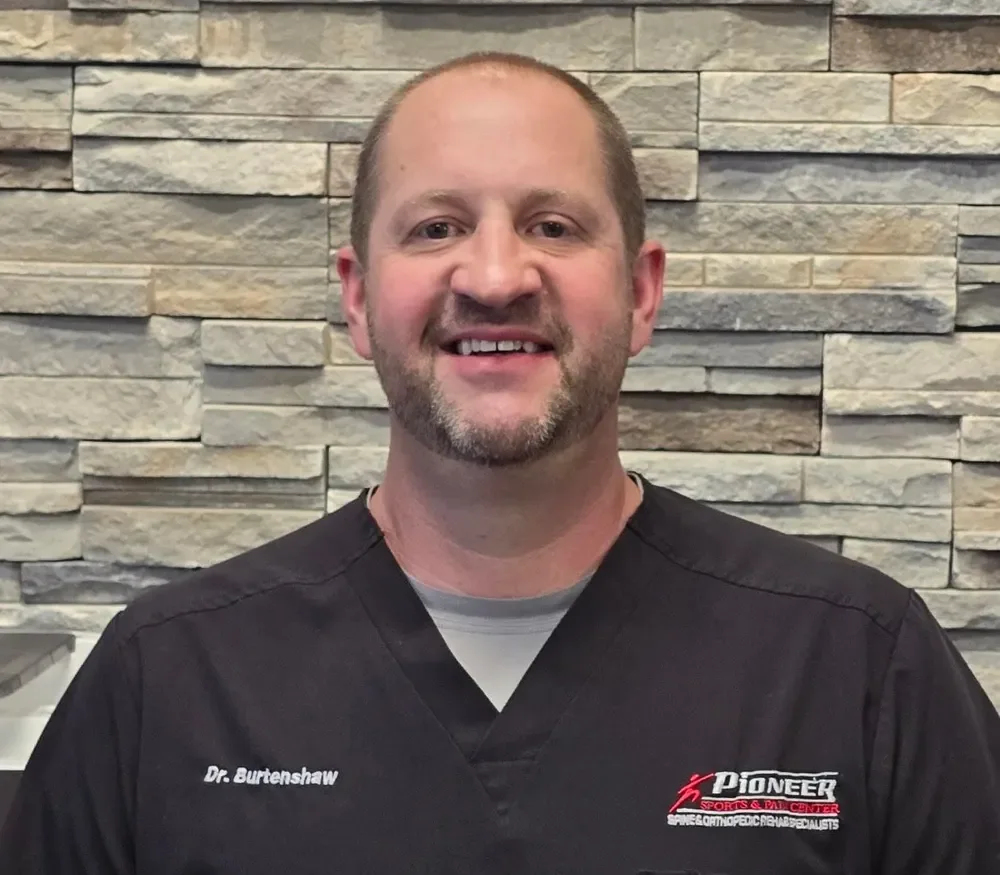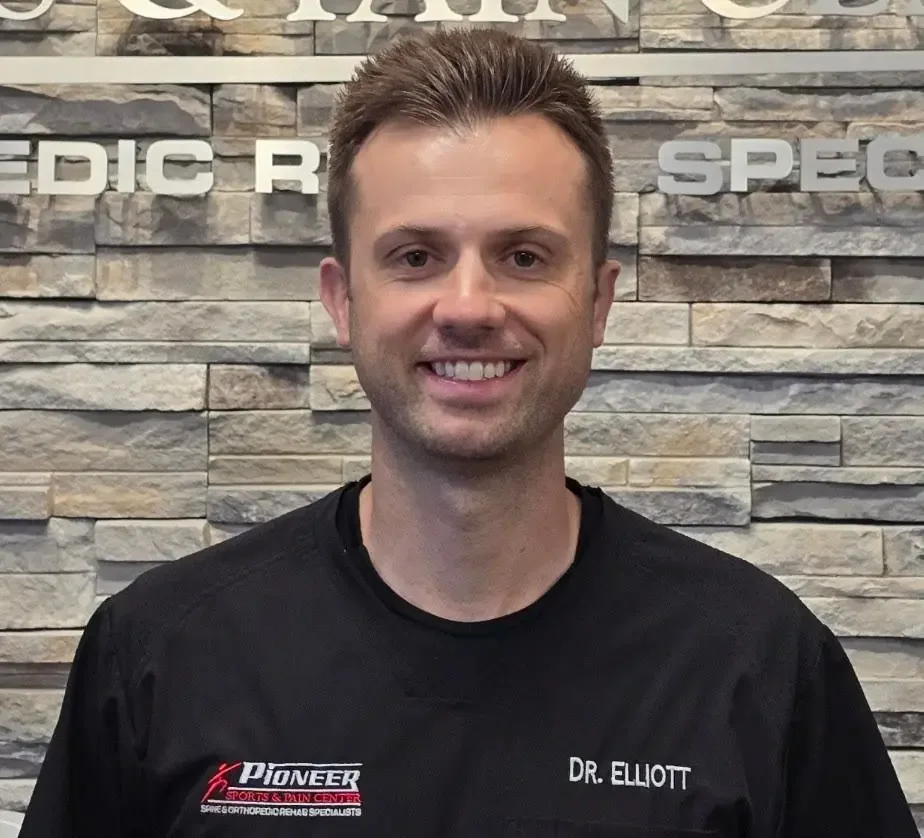Trigger Point Injections in Kuna, ID
Targeted Relief for Muscle Knots, Chronic Pain, and Myofascial Dysfunction
If you suffer from muscle tightness, deep aching pain, or “knots” that never seem to go away, you may be dealing with trigger points—localized areas of muscle spasm that can radiate pain to other parts of the body. At Pioneer Sports & Pain Center, we offer Trigger Point Injections (TPIs) to help relieve pain, restore normal muscle function, and improve your quality of life—without surgery or long-term medication use.
Located in Kuna, Idaho, we serve patients throughout Meridian, Nampa, Boise, and the greater Treasure Valley region who are seeking safe and effective pain relief from chronic musculoskeletal issues.
What Are Trigger Points?
Trigger points are tight, hyperirritable bands of muscle tissue that form when a muscle remains contracted for too long. These knots restrict blood flow, trap nerves, and cause pain both at the site and in surrounding areas—a phenomenon known as referred pain.
They are commonly found in the:
- Neck and shoulders
- Upper and lower back
- Hips and glutes
- Jaw (in TMJ disorder)
- Legs and calves
Trigger points can develop from injury, overuse, poor posture, emotional stress, or chronic medical conditions like fibromyalgia or myofascial pain syndrome.
How Trigger Point Injections Work
Trigger Point Injections involve inserting a small needle into the affected muscle and injecting a solution—typically a local anesthetic (like lidocaine or bupivacaine) and sometimes a corticosteroid to reduce inflammation. The injection:
- Interrupts pain signaling
- Relaxes contracted muscle fibers
- Restores healthy blood flow
- Flushes out waste metabolites
- Reduces referred pain patterns
This quick procedure is done in-office and usually takes less than 15 minutes.
Benefits of Trigger Point Injections
- Rapid relief from localized and referred muscle pain
- Minimally invasive, no surgical downtime
- Improves mobility and range of motion
- Reduces dependency on pain medications
- Works well with chiropractic care, PT, and other therapies
Conditions Commonly Treated with TPIs
Trigger Point Injections are highly effective for:
- Chronic neck and shoulder pain
- Low back pain
- Tension headaches and migraines
- Myofascial pain syndrome
- TMJ/jaw dysfunction
- Fibromyalgia
- Pain following trauma or surgery
- Sports-related muscle injuries
- Postural strain from desk or manual work
What to Expect Before, During, and After Treatment
Before:
- Your provider will locate the trigger point(s) through palpation and movement analysis.
- You may be asked to avoid anti-inflammatory medications before the visit, depending on your case.
During:
- The injection site is sterilized and prepped.
- A thin needle is inserted directly into the trigger point.
- You may feel a brief “twitch response” or pressure sensation.
After:
- Relief may be felt immediately or within 1–2 days.
- Mild soreness at the injection site is common and short-lived.
- You’ll be encouraged to move, stretch, and hydrate to aid muscle recovery.
Most patients return to normal activity the same day.
Integrated, Patient-Centered Care
At Pioneer Sports & Pain Center, we don’t believe in one-size-fits-all pain care. TPIs are often part of a larger treatment plan that may also include:
- Chiropractic adjustments
- Therapeutic exercises
- Manual therapy
- Postural correction
- Radial or focused shockwave therapy
- Proprioceptive neuromuscular facilitation (PNF)
Our goal is to get you moving pain-free—and keep you that way.
Frequently Asked Questions (FAQ)
How do I know if I have a trigger point?
Trigger points often feel like tight knots under the skin and are tender to the touch. Pressing on them may reproduce pain in a different area (referred pain). If you experience chronic tension or localized muscle pain that doesn’t respond to stretching, you may have active trigger points.
Are trigger point injections the same as dry needling?
No. While both involve inserting needles into muscle tissue, dry needling uses no solution—it relies on the needle’s mechanical effect. Trigger point injections introduce an anesthetic (and sometimes corticosteroids) to relax the muscle and block pain.
Is the injection painful?
Most patients describe the sensation as a pinch or pressure. Some feel a brief twitch or ache during the injection—this is normal and often a sign the trigger point is being deactivated. Discomfort usually resolves within minutes.
How long does it take for results?
Many people notice improvement within a few hours to 1–2 days after the injection. Full relief may take several days, especially if multiple muscle groups are involved.
How many treatments will I need?
It depends on the severity and number of trigger points. Some patients need only 1–2 sessions, while others may benefit from a short series of treatments spaced over a few weeks. We always re-evaluate your progress before continuing.
Will the pain come back?
If the root cause of the trigger point (such as poor posture or overuse) isn’t addressed, pain may return. That’s why we combine TPIs with corrective care, rehab exercises, and ergonomic recommendations for long-term relief.
Are trigger point injections safe?
Yes. They are considered a low-risk, minimally invasive treatment. Side effects are rare and usually limited to mild bruising or soreness at the injection site.
What’s in the injection?
The most common solution is lidocaine or bupivacaine (a local anesthetic). Sometimes a corticosteroid is added to reduce inflammation. For patients who can’t tolerate medications, dry needling may be used as an alternative.
Can I drive afterward?
Yes—most patients can return to daily activities immediately. However, if you feel lightheaded or sore, we recommend resting and hydrating before resuming physical tasks.
Is this covered by insurance?
Most insurance plans, including Medicare, will cover TPIs when they are medically necessary. We’ll verify your coverage and provide a clear explanation of any potential out-of-pocket costs before starting care.
Can TPIs be used with other treatments?
Absolutely. They are often used alongside chiropractic care, physical therapy, massage, and even regenerative treatments like PRP (Platelet-Rich Plasma) for optimal results.
How do I prepare for the procedure?
There’s no special prep needed. Wear loose-fitting clothes and let us know about any medications or allergies. Avoid taking anti-inflammatory meds (like ibuprofen) unless directed otherwise.
Schedule Your Trigger Point Injection Appointment in Kuna, ID
At Pioneer Sports & Pain Center, we believe that no one should have to live with chronic muscle pain. Whether you've been dealing with pain for years or are recovering from an injury, our trigger point injection therapy can help you get back to living with less pain and more movement.













